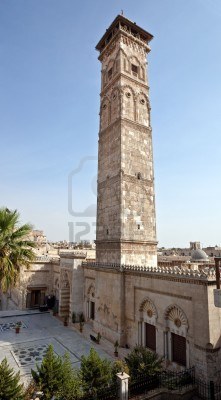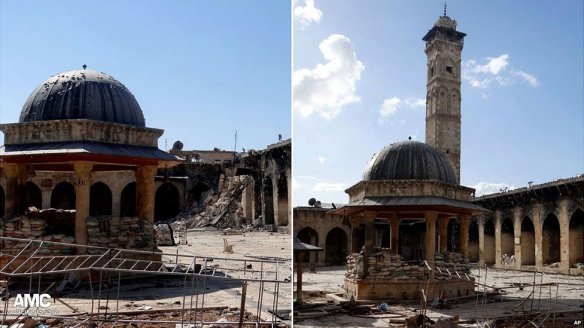History's Shadow
Exploring the link between history and today
http://historysshadow.wordpress.com/tag/cultural-heritage/
The destruction of a famous minaret dating from the Umayyad Dynasty in Aleppo, Syria’s second city, is a sad but unsurprising development in the increasingly bitter civil war that is tearing the country asunder.
The felling of regionally significant buildings such as the minaret at the Ummayad Mosque in Aleppo is in itself a crime against humanity. It is the eradication of history, of culture, traits that define national identity and societal unity. How is a population to share a future when it can no longer relate to a shared past?
In recent months, similar events have been seen in Mali, where Asar Dine philistines have destroyed some of the wondrous contents of Timbuktu’s famous shrines and libraries. The dynamiting of the Buddhas of Bamiyan by the Taliban in Afghanistan in 2001 is a further example of how radicalism, extremism and deluded ambitions have destroyed icons that, regardless of their religious affiliation, were important symbols of national prestige.
Non-Islamic heritage sites, such as Our Saidnaya Monastery, have also been damaged by fighting in Syria
 UNESCO heritage sites abound in Syria; indeed, the notion of a Syrian
land and people is almost as ancient as any other contemporary state.
During the Middle Ages it was an important centre of Islamic learning
and, as Europe slumped in a religiously-repressed Dark Age, the Middle
East became the cultural and educational capital of the world. Within
that, Syria almost predominated. The Ummayad had their capital at
Damascus in the seventh and eighth centuries and their successors, the
Abbasids, contributed further to Syrian heritage with the construction
of libraries and educational institutions. The Seljuk Turks built great
mausoleums and mosques for their rulers, many of which remained standing
throughout Mongol rampages, Ottoman rule in the Early Modern period and
European incursion in the 19th and 20th centuries.
UNESCO heritage sites abound in Syria; indeed, the notion of a Syrian
land and people is almost as ancient as any other contemporary state.
During the Middle Ages it was an important centre of Islamic learning
and, as Europe slumped in a religiously-repressed Dark Age, the Middle
East became the cultural and educational capital of the world. Within
that, Syria almost predominated. The Ummayad had their capital at
Damascus in the seventh and eighth centuries and their successors, the
Abbasids, contributed further to Syrian heritage with the construction
of libraries and educational institutions. The Seljuk Turks built great
mausoleums and mosques for their rulers, many of which remained standing
throughout Mongol rampages, Ottoman rule in the Early Modern period and
European incursion in the 19th and 20th centuries.Their survival has testified to the survival of Syria. For how much longer are we going to be able to say that?


